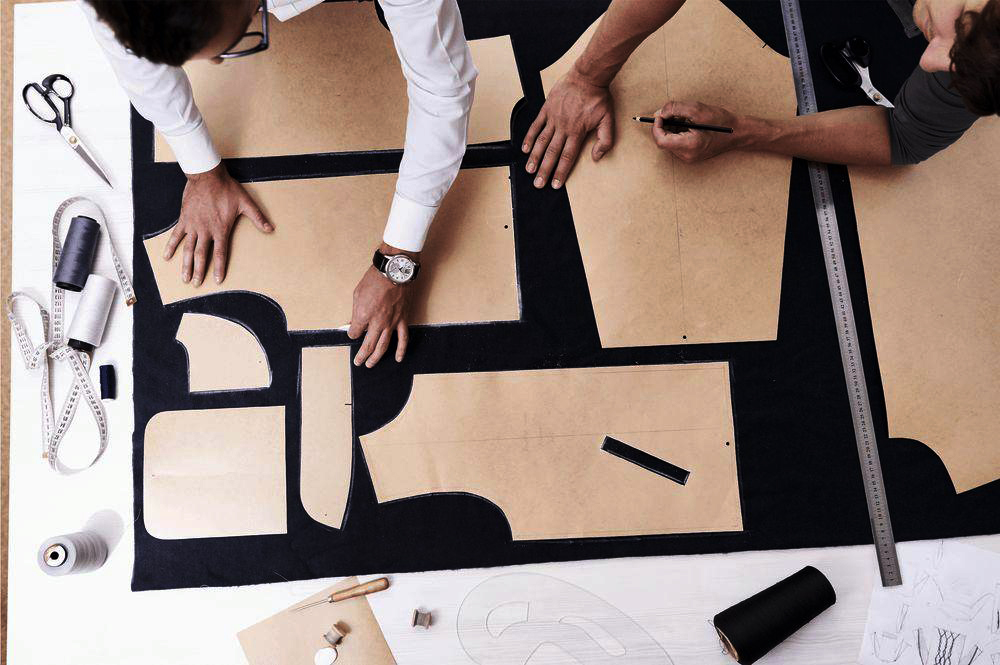A pattern is created to produce prototypes or complete production runs. It is used throughout the production process. If there is no pattern the sample maker will have no direction. Patterns are the template of style and measurement. They communicate all necessary information to create perfect garments. Many call pattern makers the architects of the fashion industry.
Need to Know Information
To communicate properly with the pattern maker the designer should be prepared with the following:
If you already have a garment that you like regarding the fit, then supply 2 garments in 2 consecutive sizes, Medium and Large. Garment patterns are incredibly important in cut and sew manufacturing.
- how the finished garment should look;
- design, shape, fit, measurements and placement of all details for each garment.
The pattern maker works with this provided information, along with front and back sketches, technical flats, and spec sheets. All details from width of pant leg, spacing between pleats, special linings, specific types of seams, etc. are needed to expedite the completion of each pattern and garment/product.
Pricing
Starting base price for any pattern is around $175 which includes up to 5 pieces. Each additional piece needed for the garment is $25 each.
- We consider a typical t-shirt to consist of 5 pieces; Front, Back, Left Sleeve, Right Sleeve and Collar.
- A Hooded sweatshirt, for example, would consist of 10 pieces; Front, Back, Waistband, Left Sleeve, Right Sleeve, Left Cuff, Right Cuff, Front Pocket, Left Hood, Right Hood.
How Does It Work?
Based on the designer’s feedback in regards to the garment/product shown in the first fitting, the pattern maker will then revisit the original pattern and make the adjustments necessary to perfect the pattern. From this second pattern a second fitting garment/product is cut and sewn and another fitting is conducted. Again the designer gives feedback and from this feedback final adjustments are made to the pattern.
Now, you’re ready to begin your Sales Samples.
Grading
Once you have the initial pattern for your garments, the next step is to create alternative sizing. This process is called pattern grading and involves making other sizes using your basic blueprint. Some manufacturers have standard guidelines for grading, and this is where you see common retailer measurements. For example, size 8 and beyond, sizes S, M, L, and so on.
There are no standard sample sizes in the garment or pattern industry. Each manufacturer sets its own base pattern measurements and grades patterns based on a specific customer base. Grades can differ between industries, companies, and even different product lines. This is why one size 8 can be different from another size 8 (i.e., different base pattern measurements) and why the difference between a size 8 and 10 can vary between two different companies.
Grades typically decrease or increase by an inch from size 0 to size 10; after that, from sizes 12 to 16, a decrease or increase of two inches between each size is customary. A “standard” industry grade, from Small to X-Large, is two-inch difference in circumference, with a half-inch length difference from one size to the next.
Pricing
Price of grading is based on the number of sizes and number of pieces. Prices range from $30-$50 per size)
